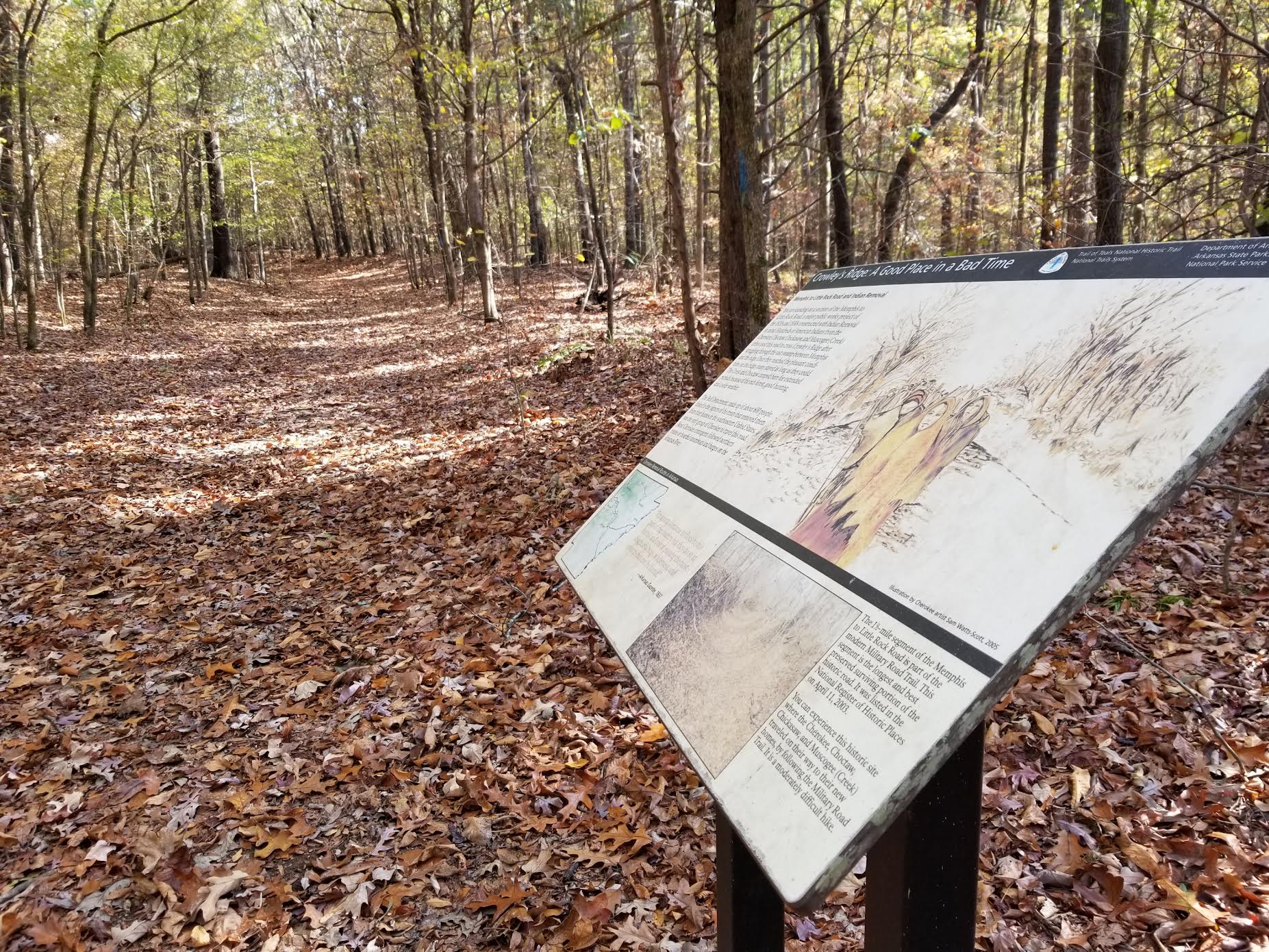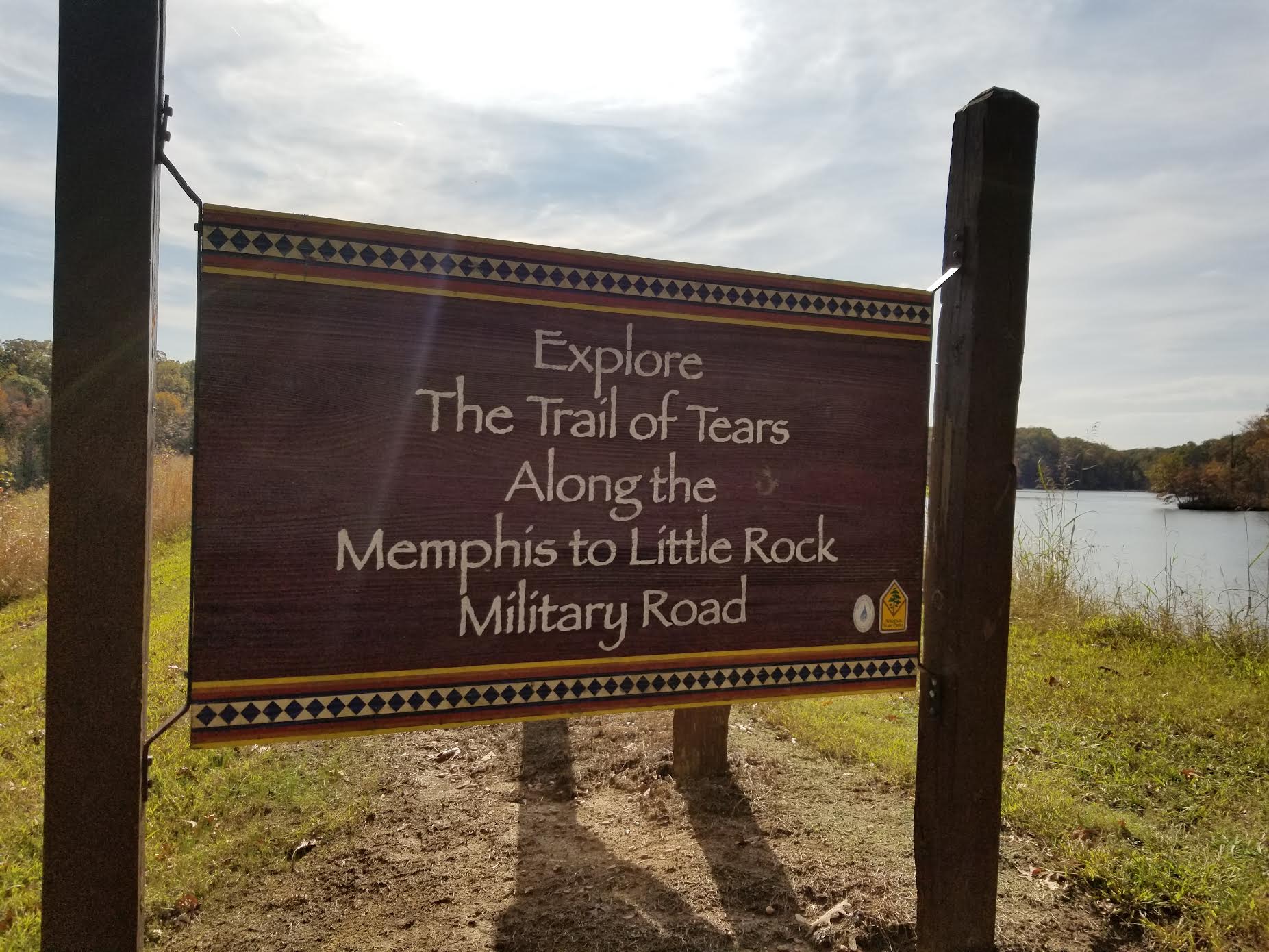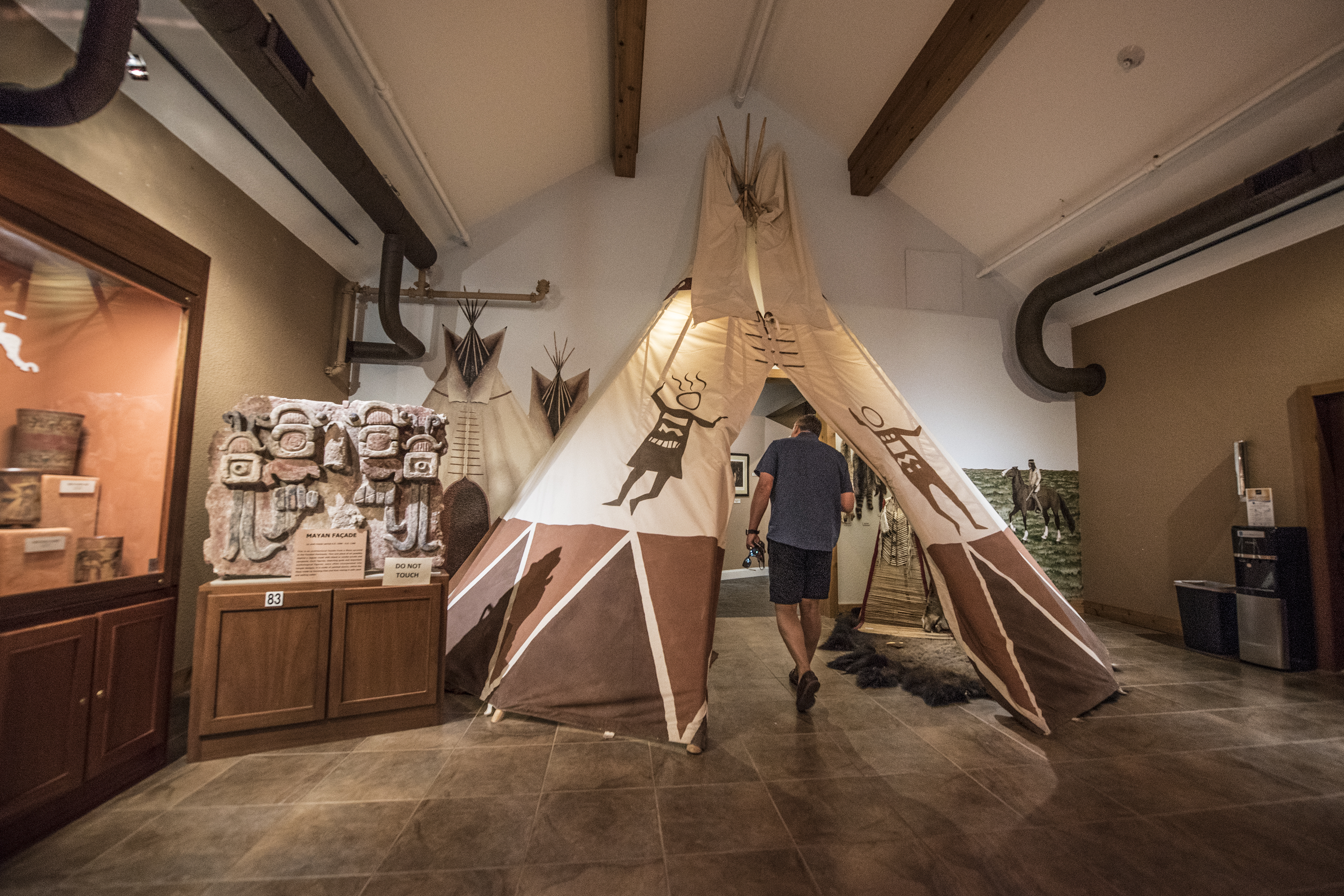The Trail of Tears at Village Creek State Park
Village Creek State Park near Wynne is the second largest state park in Arkansas. The park helps preserve an important though difficult piece of U.S. history. While here you can visit the Old Military Road Trail, which stands out as the most intact segment of the Trail of Tears in the state.
The loop trail was once a road known as the Military Road and it linked Memphis to Little Rock and was one of main routes of Indian removal in the 1830s. Interpretive signs at the trail and in the park’s Discover Center ( the signs in both locations are the same and give the same details) give information about this section of the Trail of Tears.

Information on one of the signs states: “In the early 1800s the United States was expanding westward into the new lands purchased from France. The eastern states and the federal government were attempting to satisfy white settlers by negotiating treaties with and passing laws over the Native American nations. This process led to the election of Andrew Jackson as President, passage of the Indian Removal Act of 1830, and removal of the Choctaw, Chickasaw, Creek, Cherokee, and Seminole to present day Oklahoma. Arkansas played a key role in the removal story and the lands that are now preserved as Village Creek State Park witnessed the passage of members of four of these Five Tribes.”

The park also includes original land grants of William Strong, who ran a store during this era that served as a ration depot for removal parties. He was instrumental in bringing the Military Road through the area and has many other historical ties to the area including being the first sheriff of St. Francis county. You can read more about Strong here.
Village Creek State Park lies on a geological formation known as Crowley’s Ridge, an erosional remnant created millions of years ago from the powerful natural forces of rivers. The topography of Crowley’s Ridge offered a small reprieve of the harsh conditions tribes faced during their removal journey. An interpretive sign on the Old Military Road Trail reads: “Hundreds of American Indians from the Cherokee, Choctaw, Chickasaw and Muscogee (Creek) tribes used this road to cross Crowley’s Ridge after struggling through the vast swamp between Memphis and the ridge. Once they reached the pleasant conditions on the ridge, many stayed as long as they could. The Creek and Choctaw camped here for extended periods because of the rich forest, good hunting, and cooler weather.” You can learn more about this geological formation at Crowley’s Ridge State Park near Paragould.
Along with Village Creek State Park, there are four other state parks that are also National Park Service Trail of Tears National Historic Trail sites. These parks include Lake Dardanelle State Park, Mount Nebo State Park, Petit Jean State Park and Pinnacle Mountain State Park. You can learn more about the Trail of Tears at these locations at this article: arkansasstateparks.com/articles/trail-tears-across-arkansas-state-parks.
Arkansas is also home to the Sequoyah National Research Center in Little Rock. It is the only research center dedicated to the research of Native Americans in the state and preserves all forms of expression by Native Americans. The center recently completed a landmark project called "Journey of Survival: Indian Removal Through Arkansas,” which provides detailed information regarding the history of Indian removal through the state. The website for this project is Journeyofsurvival.org and the site has information on more than 80 sites in Arkansas, including Village Creek State Park, that are tied to this difficult piece of U.S. history.



